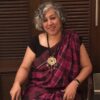A good number of Dalits intuitively believe that they are born to do the perennial drudgery and thralldom to upper-class Hindus. Their belief has become almost and nearly instinctive because of thousand years of the practice of their servitude. They believe that it is their pious duty to serve upper-class Hindus for the sake of the fulfillment of their religious salvation and their subsequent Moksha. This conviction of their subjugation has been embedded to Dalit instincts. And this is their stark reality. The extent of cruelty and wound, Dalits had to be subjected, impinged upon their psyche in a way that they were circumstantially forced to believe they were born to serve Hindus of the upper strata of Indian societal hierarchy. Upper-class Hindus brutally treat those Dalits in the name of Indian tradition in general and Brahminical Hindu religion in particular. According to Dalit activist-writers, it is one type of social, religious and economic terrorism and intimidation. And this is the only objective of Indian Dalit literature. To them, literature is an indivisible part of their political movement against all out injustices. Here Basudeb outlines an abstract of a research proposal into Dalit writings, in the column, The Making of Literature, beginning this week, exclusively for Different Truths.
The theme that has been dealt with in this research is how Indian Dalits are presented in Dalit fictional narratives by Dalit activist-writers living in different parts of India. By Dalit, this research includes both Dalit men and women. The research will primarily focus a comparative study of Dalit aesthetics and the mainstream aesthetics of Indian literature. Who are Dalit writers? Indian Dalit activist-writers are those who attempt to debunk conventional literary norms of Indian literature. One is the mainstream literary norms and values, which are found in conventional and canonical Indian literature, and the second one, is Dalit aesthetics, which is distinctively different from the former, and which aims at destroying the mainstream literary aesthetics and to establish separate poetics of their literary activities arising out of the millennium old oppression perpetrated to their community and their deep-rooted commitment to their self-respect and their all-out empowerment. Dalit-activist writers’ purpose of writing a piece of literature is to delineate the barbarous and inhumane cruelty committed to them by upper-class Hindus for hundreds and hundreds of years in India, resulting in the defeat of the self-dignity of a vast section of Dalits of the Indian population.
Even a good number of Dalits intuitively believe that they are born to do the perennial drudgery and thralldom to upper-class Hindus. Their belief has become almost and nearly instinctive because of thousand years of the practice of their servitude. They believe that it is their pious duty to serve upper-class Hindus for the sake of the fulfillment of their religious salvation and their subsequent Moksha. This conviction of their subjugation has been embedded to Dalit instincts. And this is their stark reality. The extent of cruelty and wound, Dalits had to be subjected, impinged upon their psyche in a way that they were circumstantially forced to believe they were born to serve Hindus of the upper strata of Indian societal hierarchy. Upper-class Hindus brutally treat those Dalits in the name of Indian tradition in general and Brahminical Hindu religion in particular. According to Dalit activist-writers, it is one type of social, religious and economic terrorism and intimidation. And this is the only objective of Indian Dalit literature. To them, literature is an indivisible part of their political movement against all out injustices. The aesthetics of ‘Art for Art’s sake’ is absent in Dalit literary enterprises. On the contrary, if anyone constructs the hypothesis that Dalit literature upholds the English literary dictum, i.e., Art for Life’s sake, he will definitely make an inappropriate and subjective evaluation of Dalit writings. Dalit literature specifically underlines the areas of injustices perpetrated to Dalits by upper-class Hindus and gives a clarion call to all Dalits to stand and revolt against all discriminations at all levels of life between Dalits and Non-Dalits.
 The exclusive perception of Dalit woman writers underscores that Dalit
The exclusive perception of Dalit woman writers underscores that Dalit  women are humiliated not only by male members of the upper-class Hindu society but also by the members of their own community. Indian Dalit woman thus suffers Indian patriarchy. Dalit women are also the victims of gender discrimination. Dalit woman writers like Bama Faustina delineates in Karukku and Sangati how Dalit women are doubly tortured and exploited by male members of their community as well as those of upper caste Hindu society. Indeed, Dalit writings, I believe, are a Revolt Literature. Dalit writers are in a sense iconoclasts. Dalit writings stand for the restoration of Dalits’ self-respect and their empowerment as equals to their uppercase Hindu counterparts. This spirit of revolt against the age-old system of Hindu society is the seminal features of Dalit writings.
women are humiliated not only by male members of the upper-class Hindu society but also by the members of their own community. Indian Dalit woman thus suffers Indian patriarchy. Dalit women are also the victims of gender discrimination. Dalit woman writers like Bama Faustina delineates in Karukku and Sangati how Dalit women are doubly tortured and exploited by male members of their community as well as those of upper caste Hindu society. Indeed, Dalit writings, I believe, are a Revolt Literature. Dalit writers are in a sense iconoclasts. Dalit writings stand for the restoration of Dalits’ self-respect and their empowerment as equals to their uppercase Hindu counterparts. This spirit of revolt against the age-old system of Hindu society is the seminal features of Dalit writings.
In this context, a hot debate among Dalit sociologists ignites that Ambedkarism and Marxism cannot go together. They are distinctively separate. Today, Dalit literature firmly stands on Dr. B.R.Ambedkar’s thoughts though it is a fact that both Ambedkarism and Marxism fight for the underdogs and the downtrodden. A study on the difference of viewpoints between Marxian class struggle and the struggle of Indian Dalits is undertaken in this research. The que stion is why and how Dr. B.R.Ambedkar inspires Indian Dalits to embrace Buddhist religion. In what ways is Buddhism different from Hinduism? Ambedkarism is not anti-religious, while Marxism is. The way a Marxist looks at religion is different from the way a Dalit-activist looks at it. These are the pertinent issues, which this research will focus. Another point which is relevant to this context is that Dalits traditionally denotes asprushya or untouchable or Ati-Shudra. Ati-Shudras are not within the four conspicuous classes (Chatur Varnas) of the Manu Sanghita. In subsequent periods, Dalit community includes Schedule Caste, Schedule Tribe, and all Backward Classes. The Mandal Commission’s report includes people of all these categories. Literally, a Dalit is an exploited human being. It may be noted that Mahatma Gandhi refers to Dalits’ Harijans or “Children of God”. The term Harijan or the phrase “Children of God” wounds Dalit consciousness. This reassertion legitimises the age-long continuing Hindu caste hierarchy in a tacit manner. Every human being is a child of God. Are not the lower caste people “Children of God”? So Mahatma Gandhi gives a clarion call to wipe out Untouchables from the Hindu society and asserts that Harijans are also “Children of God”. Does he say so because Dalits should be considered an inseparable, indivisible and unitary one of mono and unitary Indian identity? This further creates a debate on whether Indianness is single, indissoluble and unitary or not. Does Mahatma Gandhi want the integration of only two identities into one? One of the identity is of Dalit community and the second of upper-class Hindus? Does Mahatma Gandhi hint at one whole and single Indian identity? A careful examination of Dalit movements led by Dr. B.R.Ambedkar, Gandhiji’s movements for the Untouchables and the economically class-based Marxist Movements for the downtrodden will be made in three different perspectives in this research. Chapter One, entitled Introduction, will include all these and other relevant aspects of the prese
stion is why and how Dr. B.R.Ambedkar inspires Indian Dalits to embrace Buddhist religion. In what ways is Buddhism different from Hinduism? Ambedkarism is not anti-religious, while Marxism is. The way a Marxist looks at religion is different from the way a Dalit-activist looks at it. These are the pertinent issues, which this research will focus. Another point which is relevant to this context is that Dalits traditionally denotes asprushya or untouchable or Ati-Shudra. Ati-Shudras are not within the four conspicuous classes (Chatur Varnas) of the Manu Sanghita. In subsequent periods, Dalit community includes Schedule Caste, Schedule Tribe, and all Backward Classes. The Mandal Commission’s report includes people of all these categories. Literally, a Dalit is an exploited human being. It may be noted that Mahatma Gandhi refers to Dalits’ Harijans or “Children of God”. The term Harijan or the phrase “Children of God” wounds Dalit consciousness. This reassertion legitimises the age-long continuing Hindu caste hierarchy in a tacit manner. Every human being is a child of God. Are not the lower caste people “Children of God”? So Mahatma Gandhi gives a clarion call to wipe out Untouchables from the Hindu society and asserts that Harijans are also “Children of God”. Does he say so because Dalits should be considered an inseparable, indivisible and unitary one of mono and unitary Indian identity? This further creates a debate on whether Indianness is single, indissoluble and unitary or not. Does Mahatma Gandhi want the integration of only two identities into one? One of the identity is of Dalit community and the second of upper-class Hindus? Does Mahatma Gandhi hint at one whole and single Indian identity? A careful examination of Dalit movements led by Dr. B.R.Ambedkar, Gandhiji’s movements for the Untouchables and the economically class-based Marxist Movements for the downtrodden will be made in three different perspectives in this research. Chapter One, entitled Introduction, will include all these and other relevant aspects of the prese nt research.
nt research.
Chapter Two will examine fictional narratives written by Dalit writers of different Indian regions. Two autobiographical narratives translated into English from Tamil written by Bama will be studied first. This chapter will also include a thorough study of three short stories written by C. Ayyappan written in Malayalam and then translated into English. Chapter two will finally include two texts written by Dalit writers of Andhra Pradesh.
Chapter Three will study Dalit fictional narratives originally written in Marathi and then translated into English. The texts are Sharan Kumar Limbale’s The Hindu and The Outcaste and Narendra Jadhab’s Outcaste A Memoir written in English. If available in English translation, Chapter 111 will include also two Dalit texts, one from Gujarat and one from Rajasthan. Joothan A Dalit’s Life written by Omprakash Valmiki in Hindi, and then translated into English, will also be examined in this paper.
©Basudeb Chakraborty
Photo from the internet.
#Dalit #TheMakingOfLiterature #DalitBooks #BhramhinicalHindu #MahatmaGandhi #Ambethkar #Harijan #ChildrenOfGod #IndianDalit #Outcaste #DifferentTruths




 By
By
 By
By
 By
By
 By
By